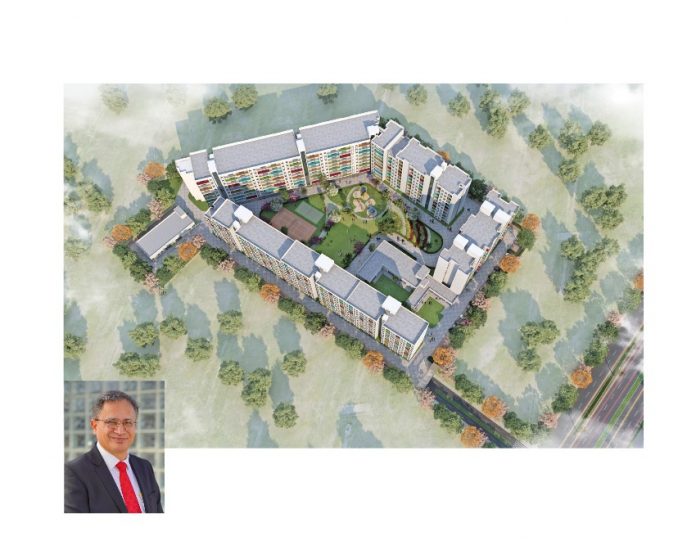
Rajeev Singhal, Executive Director, GPM Architects and Planners
Like every other industry, the real estate sector took a significant blow due to the nationwide lockdown during the Covid-19 pandemic. Today, rural migrants are streaming into burgeoning developing cities, and if minimal housing schemes are not made, slums will increase steadily. Such lack of housing for the migrant population has highlighted the need for the government to set up and provide more incentives to developers to build low-cost and affordable rental housing for the masses.
The staggering task of urban expansion requires long-range sustainable planning solutions for creating housing, open space, and adequate infrastructure. However, the traditional approach of evolution of cities that urban population growth entails cannot be contained merely by such horizontal expansion; instead, it must make sufficient room to accommodate it in more innovative, inclusive, and sustainable models.
The Government of India has taken various measures to meet the increased demand for affordable rental housing and are stressing public-private partnerships (PPP) and PSUs for the development of these units. With schemes like PMAY, DDJAY, the affordability of residential units is on the rise, and with the introduction of efficient and innovative design solutions, the value of these affordable homes could be highlighted multiple times. In addition, the evolution of construction technology has reduced the cost of construction and is speeding up the process dramatically. Therefore, the acceptance of newer construction technologies is also a key driver in accelerating the housing supply to meet the growing demand.
Under once such endeavour, GPM Architects and Planners has been appointed as the Architect & PMC consultant by one of India’s leading PSU for the development of 10,000 dwelling units at different locations across the country under the Affordable Rental Housing Complexes (ARHCs) scheme of the Ministry of Housing and Urban Affairs (MoHUA) and as a sub-scheme under Pradhan Mantri Awas Yojana (Urban). The dwelling units are set to be constructed on each selected site provided by the respective states using Innovative Construction Technologies under GHTC India. These ARHCs will be built under Model-2 of the MoHUA Operational Guidelines. The key innovation utilised here is to produce the maximum number of dwelling units in minimum time and at optimum cost using efficient technologies such as prefabrication and modular design.
A model project is being developed with dwelling units designed as per the approved proposal and constructed using recommended construction technologies. Though a typical design will be followed to maintain cost efficiency, adequate measures are kept in consideration to modify them as per local climate and context. The project is stated to demonstrate and deliver ready to live-in houses with speedy, economical, and better-quality construction in a sustainable manner. Additionally, the structural details are designed to meet the durability and safety requirements of applicable loads, including earthquakes, cyclones, and floods, according to the applicable Indian/International standards.
One of the biggest questions raised in the construction industry today is how rapid urbanisation shapes the face of Real estate development in India. The issue of prime concern today is to not lose out on an opportunity to create a better future for the masses. It is crucial that developers and architects carefully address ‘High-Rise’, integrated with good construction practices that govern the upcoming development. Even though the pandemic has affected the housing industry, it has significantly changed how we perceive our residential spaces. The growing importance of homeownership and shift in housing requirements will undoubtedly lead to better days and a quicker pace of revival in the coming years.
About Rajeev Singhal
Rajeev Singhal has more than 28 years experience as a professional architect, spanning diverse projects. He is a graduate of the prestigious IIT – Roorkee. Currently, he is an Executive Director at GPM Architects and Planners.





